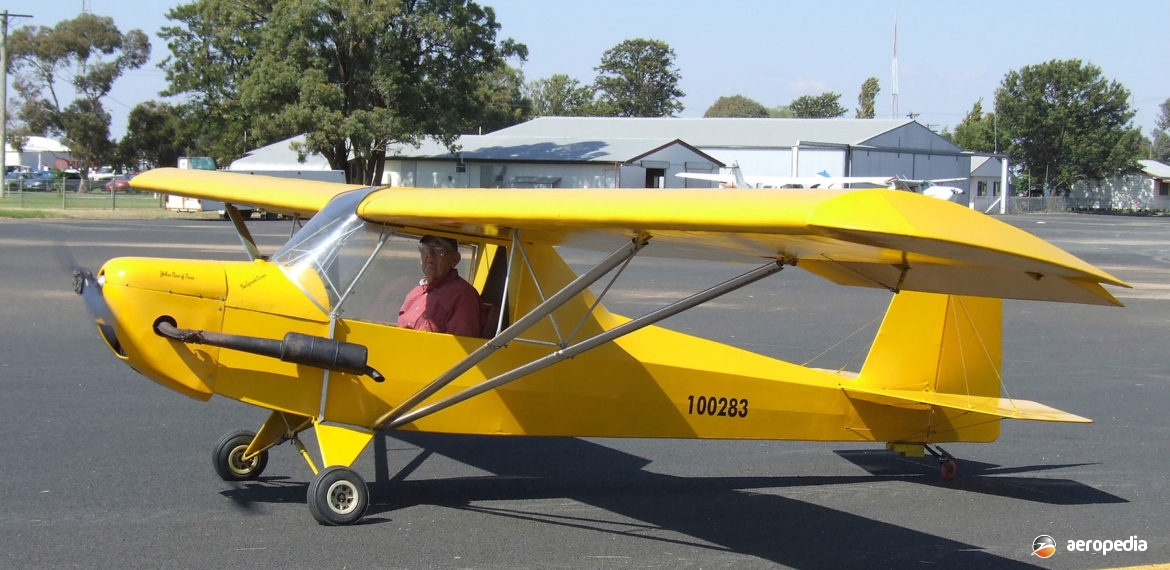Photograph:
AAW J-3 Kitten 10-0283 (c/n 1) at Narromine, NSW (David C Eyre)
Country of origin:
United States of America
Description:
Single-seat light sport monoplane
Power Plant:
One 21 kw (28 hp) Rotax 277 engine two-cylinder, two-stroke, geared air-cooled engine
Specifications:
- Wingspan: 9.14 m (30 ft)
- Length: 4.95 m (16 ft 2 in)
- Wing area: 11.14 m² (120 sq ft)
- Never exceed speed: 101 km/h (63 mph)
- Economical cruising speed: km/h (58 mph)
- Stalling speed: 39 km/h (24 mph)
- Rate of climb: 229 m/min (750 ft/min)
- Range: 241 km (150 miles)
- Fuel capacity: 19 litres (4.16 Imp gals)
- Empty weight: 113 kg (249 lb)
- Loaded weight: 227 kg (500 lb)
History:
The J-3 Kitten was one of a series of light aircraft produced by AAW [Australian Aircraft Works] at Donvale, VIC, under licence from the Anglin Aircraft Company in the US, being a high-wing strut-braced monoplane of conventional light aircraft appearance, the other designs being the J-4 Sportster, the J-5 Super Kitten and the Space Walker. Designed by Jesse Anglin in the United States it had a chrome-molybdenum welded steel tube fuselage, the wing ribs and spar being of spruce covered in fabric. A deluxe variant was known as the J-5 Super Kitten, whicj was fitted with a Rotax 447 engine, had an increase in fuel capacity and had a strengthened wing.
The J-3 Kitten was a 75% scale version of a Piper Cub and was available as a plans only aircraft, the first completed flying in 1984. Later Hipp’s Superbirds bought the Company and subsequently manufactured the J-3 Kitten, J-4 Sportster and Super Kitten. Hipp’s later added to this line the Reliant and Super Reliant. These two were fastback versions of the J-3 Kitten.
Construction of the airframe was of 4130 chrome-moly steel. The wings were built from wood and both the fuselage and wings were covered with fabric. Floats and skis could also be installed.
One J-3 Super Kitten (N690JA) was powered by a Rotax 503 dual ignition, carburetted, oil-injected engine driving an Ivo carbon fibre three-blade ground-adjustable propeller. This model had a max speed of 177 km/h (110 mph), a stalling speed of 45 km/h (28 mph) and a rate of climb of 305 m/min (1,000 ft/min). A BRS ballistic parachute could be installed.
A number of examples have been registered in Australia under RAA regulations.

